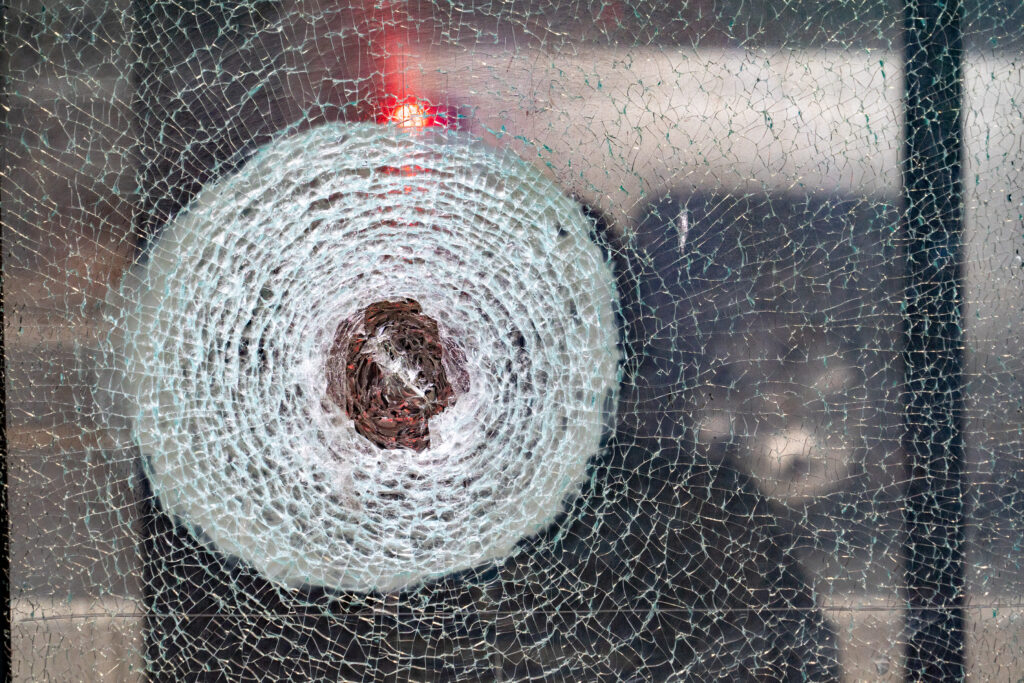Banks, credit unions, and other financial institutions face a number of potential threats due to the large amounts of money handled at these facilities on a daily basis. Luckily, bullet resistant glass for banks can provide an essential layer of protection that makes it more difficult for assailants to access secure areas. These barriers can also improve safety conditions for employees and customers and may often deter potential break-ins or armed robberies before they even begin.

Those in charge of designing and improving the architectural elements of banks and financial institutions need to carefully consider several factors when choosing these protective solutions. In addition to the strength and practical benefits they provide, there are also architectural elements that can impact both safety and aesthetics. Here’s a guide to architectural bulletproof solutions specifically for banks.
Capabilities and Services for Banks and Financial Institutions
What types of commercial security products make sense for banks and financial institutions? The answer actually varies depending on your specific risk assessment and the architectural layout of your space. There are a huge range of bullet resistant solutions available, including various levels of protection as well as different designs and structures made to fit an array of spaces.
First, it’s important to understand exactly what type of protection bullet resistant systems provide. There is no material that is completely “bulletproof.” This is simply a common term that describes materials made to withstand some level of ballistic impact. Underwriters Laboratory defines 10 levels of ballistic protection in the UL752 standard, which is the most common standard referenced, ranging from level 1 which consist of three shots of a 9mm handgun to level 10 consisting of 1 shot of a .50 rifle. The levels in between spell out various numbers of shots for different caliber weapons but in all cases the results must provide complete protection. In order to pass UL752 testing the glazing material must prevent not only penetration of each projectile but there can be no spall of any kind to the interior/safe side of the glazing. A cardboard witness panel is placed on the interior/safe side of the glass during the test and if any shard of glass pierces the witness panel during any of the shots it is a failure. It is important to note that there is no such thing as a UL752 low spall product. UL752 allows for no spall during testing.
It’s important to consider these levels of protection when selecting bullet resistant glass for banks or financial institutions. A full threat assessment may help you determine the ideal products for your facility. And some banks may even utilize products with different UL levels to address various needs throughout the building. For example, a lower level may be sufficient for counterline systems, which already serve as a deterrent for many potential incidents. However, stronger protection may be necessary around money counting rooms or entrances that may be vulnerable to more sophisticated attacks.
The Architectural Side of Commercial Security
However, selecting bullet resistant glass for banks isn’t just about finding the best level of protection for your facility’s needs. It’s also about fitting the right solutions into your building in a way that supports your daily operations and the architectural style of the space. Architectural bulletproof solutions for banks may include windows, doors, storefronts and counterline systems. Some may even use various products to create specialized solutions like safe rooms or entryway systems. Here’s some more information about a few of these specific solutions.
Some banks can benefit from bullet resistant doors and windows around their exterior. These can prevent after-hours break-ins from intruders outside the building. These are simply installed around vulnerable points of entry just as traditional doors and windows would be.
Bullet resistant doors and storefront systems may also be used at the entrance of the financial institution to screen customers coming into the building. Vestibules that include metal detectors can be installed at the front entrance to keep would-be assailants from entering the bank with a weapon. If the metal detector identifies a weapon the second set of doors remains locked and entrance is denied keeping the facility safe. In this case only a teller can choose to override the system and allow entrance into the bank.
Then there are counterline systems and bandit barriers. These are installed on top of the teller line providing a level of security/separation between tellers or other employees and customers or members of the public. These systems are generally fabricated from bullet resistant acrylic (UL752 levels 1-3) that can easily be fabricated and polished into a customer friendly, aesthetically pleasing enclosure that provides added security for tellers. These systems can also include features such as speaker ports for added voice transmission, deal trays for easy and secure passage of money, documents and identification and package exchange units which allow for passage of large parcels or coins without compromising the security of the system.
Many banks may benefit from one or a combination of these solutions depending on the design of the space and threat level that is present. It is important to consider these items when trying to determine what security solution and level of protection will be the best fit.
When selecting bullet resistant glass for banks, it’s important to have a trusted advisor by your side who understands the materials, protection levels, and architectural considerations. Insulgard offers a huge array of protective solutions, including our BULLETBLOCK line of doors, windows, counterline systems, panels, and protective glazing. All of our products are tested against industry leading standards to ensure maximum protection. And we can even recommend product customizations, combinations, and installation services to make sure your materials fit seamlessly within your building’s architectural elements. Reach out today to schedule a consultation with our knowledgeable team.

